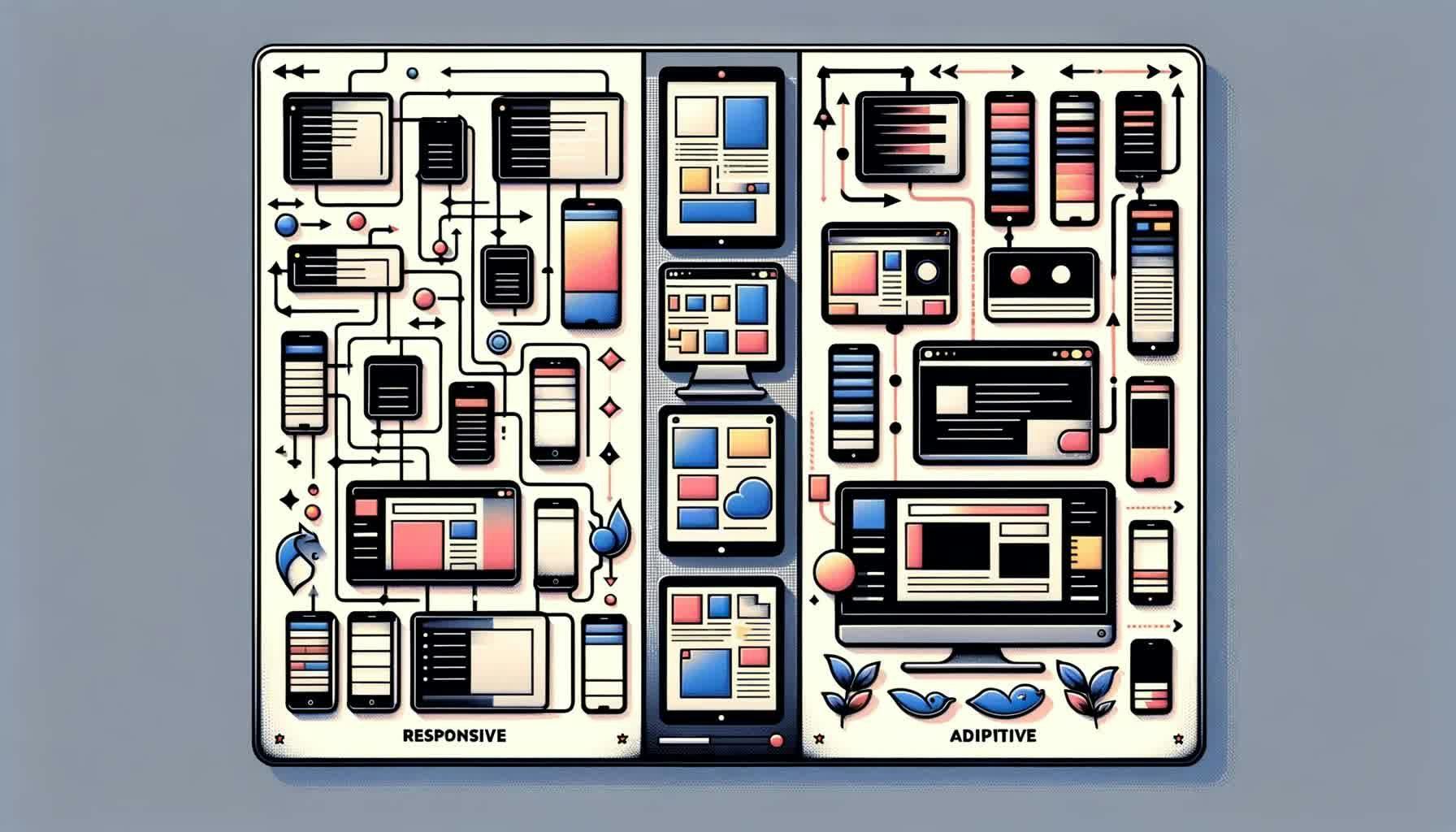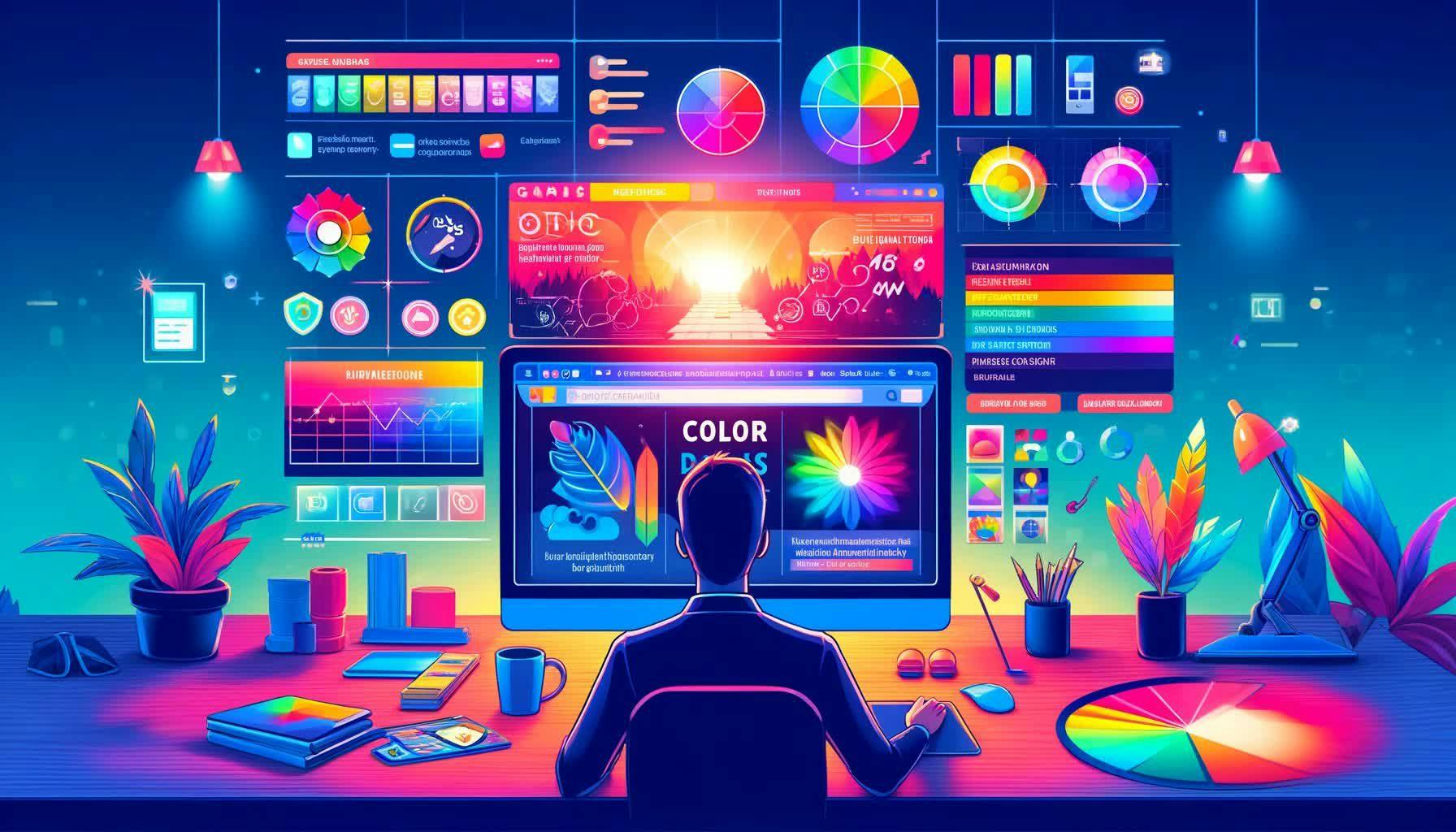Related articles
Responsive vs Adaptive Design: A comparative analysis on the optimal approach
25 Apr 2024
In the world of web design, there are two main methodologies popularly adopted by developers: responsive and adaptive design. Each offering unique capabilities, they cater to users' diverse needs. In this article, we perform a detailed comparative analysis between these two design structures, extensively discussing their pros, cons, and determining the optimal approach depending on certain variables.

Shedding Light on Dark Mode: Key Considerations and Advantages when Adapting Websites
9 Apr 2024
The digital world is increasingly embracing dark mode, with many popular websites now offering this viewing alternative. User-centric and energy-efficient, dark mode has won the heart of night owls and aesthetics-lovers alike. In this article, we illuminate the keys to adapting websites for dark mode, and explore its compelling advantages.
Infinite Scroll vs Pagination: Which One Wins in Website Design?
19 Mar 2024
Infinite Scroll and Pagination are time-tested strategies for handling large volumes of data on websites. While infinite scroll allows continuous data feed, pagination breaks it up into separate pages. Each has its own strengths and trade-offs. In this article, we delve into these two strategies, compare their merits and limitations, and attempt to crown a champion in the context of website design.
Essentials of Effective UX/UI Design: How to Craft an Intuitive Website
22 Feb 2024
The essence of every successful website is not only determined by its visual appeal, but also by its inherent usability. This is where effective UX/UI Design comes into play, for it forms the bridge between users and the digital world. This article takes a deep dive into the essentials of UX/UI design and how they can be applied to craft an intuitive website.
Why Tailwind UI is a Must-Know for Modern Web Developers?
26 Oct 2023
In the realm of modern web development, the need for efficient tools is increasingly exigent. Harnessing the power of such an asset, Tailwind UI is emerging as a comprehensive solution. Streamlining the development process, it allows to make compelling web interfaces with ease. This write-up aims to explore the quintessence of Tailwind UI in today's digital age.
Influence of Google Fonts on UX and UI Design
3 Aug 2023
In the fusion of UX and UI design, nothing is trivial. Each element, including typography, plays a pivotal role in engaging user interaction. This article focuses on understanding the crucial influence of Google Fonts on UX & UI design. We delve into its impact on aesthetics, functionality, and overall user experience.
Human-Centered Design: Pivotal Player in the Arena of Modern Technology Development
17 Jul 2023
Human-Centered Design, a novel paradigm in modern technology development, is ensuring a revolution in software designs by prioritizing the user experience. As a core approach to problem-solving, it carefully blends technology with human needs to deliver highly-effective and usable solutions.
Show all articles related with #Web design

